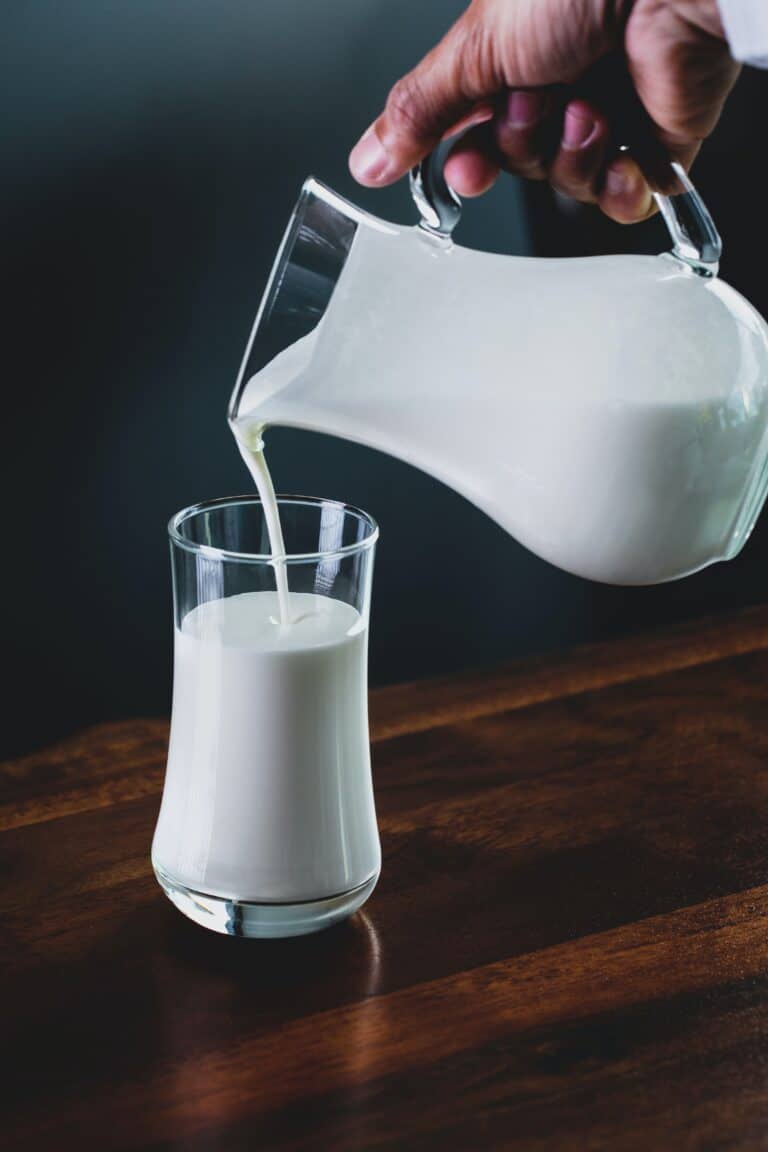Milk is an essential part of most people’s diets. It’s a terrific source of calcium. It’s used in a variety of recipes, and without it, cereal would be dry and tasteless.
But when you get to the store, you may have trouble choosing the milk product that’s best for you. With choices including skim, 1%, 2% and whole, it can be difficult to decide which to bring home from the market. While some types of milk have higher fat and calorie content, others are said to be more nutritious.
So which should you choose? This article will break it down for you.
Skim, 1%, 2%, Whole: What’s the Difference?
First, let’s start by getting one thing clear. All types of milk contain 13 essential nutrients. The nutrient counts vary slightly depending on the milk you are drinking. But if you are choosing whole milk because you think it’s more nutritious, you are getting very minor benefits if any at all.
So that leaves us with the fat and calorie breakdowns. These are as follows:
• Whole Milk: 150 calories, 3.25% fat
• 2%: 120 calories, 2% fat
• 1%: 100 calories, 1% fat
• Skim: 80 calories, 0% fat
The Controversial Fortification Process
Many people question the nutritional value of lower fat milks because they are fortified.
Low fat and skim milks are processed to reduce fat content. This causes them to lose some of their nutrition. The nutrients are restored through a fortification process that many find to be controversial due to the techniques and ingredients used.
While the fortification process is questionable, it can result in a product with even more nutrients.
Here is a breakdown of how each type of milk adds up in terms of the nutrients they contain.
• Whole Milk: 8 grams protein, 9% of the daily value of potassium, 27% of the daily value of calcium, 5% of the daily value of vitamin A, 24% of the daily value of vitamin D
• Low-fat Milk: 8 grams protein, 9% of the daily value of potassium, 29% of the daily value of calcium, 9% of the daily value of vitamin A, 29% of the daily value of vitamin D
• Skim Milk: 8 grams protein, 10% of the daily value of potassium, 29% of the daily value of calcium, 10% of the daily value of vitamin A, 25% of the daily value of vitamin D
New Study on Aging
If you are looking for anti-aging effects, you may want to stick to milks with a lower fat content. A 2020 study showed that drinking nonfat or 1% milk accounts for 4.5 years of reduced aging in adults.
Telomeres are nuclear end-caps of human chromosomes that are closely related to aging. They replicate and become shorter as time goes on. The older people get, the shorter their telomeres are.
The study revealed that people who drink high fat milk have shorter telomeres and show greater signs of aging.
So which milk should you drink? With pros and cons in associated with each, it may just come down to a matter of taste. Which will you be including in your diet?
Author
Marissa Bergen



